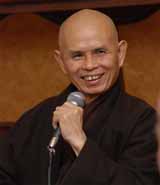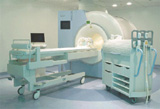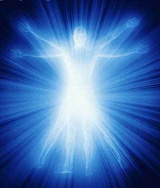Patterns of illness
Disease — the inner disharmony
Modern medical theories maintain that germs and viruses attack the body and a lethal attack on them is the only remedy. These theories (by definition) mean a constant battle for the human being, because the source of infections is not traced. The cellular theory of Beauchamp, which has not found favour with modern medical practitioners, states,
“Disease arises from micro-organisms within the cells of the body. Microorganisms become ‘pathogenic’ as the health of the host organism deteriorates. Hence the condition of the host organism is the primary causal agent”.
If one keenly observes, one sees that gratification is at the root of creating ill-health. It is lack of awareness to one’s own inner reactions in day-to-day activities that creates the deterioration. One is gratified with certain situations or relationships. The organs of the body also take a cue from the mind and become insensitive, such that any abnormal pressure not being understood creates a break down or mal-function.
Disease gives us an indication that something is wrong and that we need to be sensitive to the part affected. If the organ affected is drugged, it becomes dependent upon the drugs, and is satisfied with them. A drug can give it power, but if it is satisfied or gratified by this, the situation creating disease is repeated violently.
If one is watchful one can understand that the uneasiness we often feel is due to a reaction against the disease. If one can remain psychologically with the pain or uneasiness and not move, then the mind becomes silent and action emerges. One can observe that it is our mental uneasiness that first troubles us and not the physical manifestation in the form of disease or accident. When there is pain, the unconscious reaction is a ‘psychological avoidance of it’, ‘how has it come to me’. If such reactions can be watched, the action becomes clear and effortless. The mind’s alertness to its own reactions does not put the body organs to sleep, it also keeps them active and sensitive.
Thich Nhat Hanh, the Vietnamese Buddhist monk observes,
“When roots of affliction such as anger, confusion, jealousy and anxiety manifest in us, our body and mind are generally disturbed by them. These psychological feelings are unpleasant and they agitate the functioning of our body and mind” (1).
Fear and anger are fields of energy which arise from a physiological and /or psychological base. The unpleasant feelings which fear and anger give rise to are also fields of energy. The Buddha teaches us not to repress fear or anger, nor the unpleasant feelings brought about by them, but to use our breath to be in contact with and accept these feelings, knowing that they are energies which originate in our psychological make-up. To repress our feelings is to repress ourselves. Mindful observation is based on the principle of non-duality. Our pleasant feelings and ourselves are one. We have to be in contact with and accept the unpleasant feelings before we can transform them into the kinds of energy which are healthy and have the capacity to nourish us. We have to face our unpleasant feelings with care, affection, and non-violence. Our unpleasant feelings can illuminate so much in us. By our work of mindful observation, we see that experiencing certain unpleasant feelings provide us insight and understanding.
“The whole character of our feelings can change just by the presence of mindful observations” (2).
There is nothing wrong with desire. If desire is not understood one is attached to it, it becomes a need due to mechanical habits of the mind, which further fuelled becomes greed. One falls from heightened greed through illness or accident.
When one is under treatment he can be gratified by the hospital, the services of the doctors, the latest equipment and best medicines. So one can get absorbed in all this. And thus there are chances of recurrence as one unconsciously creates a pattern of enjoyment through the treatment of disease. If one is conscious at such times, any treatment will be highly effective. One will feel cured from the core. Disease itself is the result of unconscious patterns created by the mind. The process of treatment may further strengthen those patterns or create new ones. Being conscious shows the direct way to treatment, without hospitals.
There is no algebric relationship between any particular situation and disease or between any particular medicine and disease. The relationships built by medical theories are based on statistical derivatives and applied universally. Life as such does not admit any such clear-cut relations. Each case is unique and has to be treated individually. Then one can take the help of medicines. The modern system is based on commercial considerations; the holistic approach alone gives true health to human beings.
The process of health is dependent upon the true intention of the patient. If he uses his disease and treatment as a means for gratification, he is likely to be involved in complications which will carry further the process of his gratification.
It is not that ‘disease’ is wrong. It is a step to progress. Only by understanding the negativity (such as disease), one can attain true happiness which is also not a goal. If that is taken as a goal, one stoops once more to the gratification level. One can only explain things in words upto a certain point. Everyone has to move alone in ‘understanding’ anything.
In Sri Aurobindo’s words,
“Pain and grief are Nature’s reminder to the soul that the pleasure it enjoys is only a feeble hint of the real delight of existence. In each pain and torture of our being is the secret of a flame of rapture compared with which our greatest pleasures are only as dim flickerings. It is this secret which forms the attraction for the soul of the great ordeals, sufferings and fierce experiences of life which the nervous mind in us shuns and abhors” (3).
Ill-health is created by the mind when it sticks to its point of view, its calculations and its principles. It thus restricts the flow of ‘prāṇa’ to various channels of the body. The body only faithfully follows the mind. When one is able to detach oneself from ‘mental arithmetics’ (they may even be correct), there is an unrestricted flow of life-force to the body which can ward off disease.
Modern medicine has done miracles in the field of ‘medical and surgical intervention’ for the treatment of various diseases. But their diagnosis and treatment procedures have not been able to clear the fear of disease from people rather it starts generating fear at the onset of disease. Interestingly, the inventors of these procedures and doctors themselves are part of this fear psychosis. They are human beings too. Each new discovery in the medical field, instills a sense of fear. Collective fears give rise to a fearful society which is continuously engaged in warding off fears. So where is true health? What is missing in our approach?
In order to deal with fears, the human mind has to understand the overtones of fear. Fear is a seeking for psychological security, seeking for certainty. When we are free from this, fear is cleared. Only a mind free of fear can deal with disease intelligently. It can take the help of medicines and surgical procedures, if required. Love and joy become the basis of treatment.
It seems to be our habit to make health a goal, a sought-after thing, the absence of which shakes us. Yes, it shakes us out of our slumber. Whenever we are satisfied with anything, say health, this cocoon of satisfaction is broken so that we are aware that this is not our true goal.
Does it mean that our medical systems have failed? These systems have certainly robbed the joy of normal living and dying. There is a greater clinging to life with fear. We may have added some years to our lives and controlled certain diseases, but this has given us a new set of problems. So we are where we were. The question arises, what is progress?
We are measuring progress by more efficiency and higher speed which creates anxiety. We do not initiate this speed, we just move with it. Our relationship with the disease remains where it was. Moving on a fast track system, our anxiety for quick results also increases. We have never questioned the idea of psychologically depending upon diagnostic results. We have never checked whether our psychological dependence upon investigations makes us anxious. If I do not depend upon results, I can operate from a divine stillness which contains the fast speed. Then I am using this speed and not moving with it.
Thus an inner exploration begins. We can take our cue and start discovering things when we feel unwell...
References
1. Thich Nhat Hanh. Transformation and Healing. New Delhi; Full Circle, 1998, pp. 76-77.
2. Ibid.
3. Sri Aurobindo. SABCL, Vol. 16. Pondicherry; Sri Aurobindo Ashram Trust, 1971, p. 386.
Dr. Y.V. Chawla is a practicing Siddha doctor in Chandigarh
Share with us (Comments,contributions,opinions)
When reproducing this feature, please credit NAMAH,and give the byline. Please send us cuttings.




